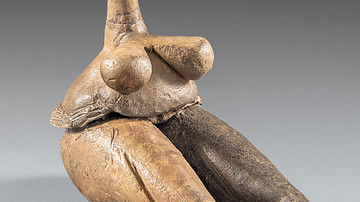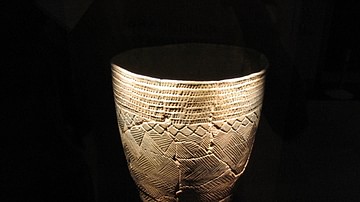Search
Search Results

Article
Women Scientists in the Scientific Revolution
Women scientists during the Scientific Revolution (1500-1700) were few in number because male-dominated educational institutions, as well as scientific societies and academies, barred women entry, meaning that few had the education or opportunity...

Image
Neolithic Clay Figurine from West Iran
Neolithic clay goddess from Tappah Sarab, Kermanshah, 7000-6100 BCE. Clay figurines of female bodies with exaggerated reproductive organs are among the most common features of prehistoric sculpted art. With famous examples from Venus of...

Image
Korean Neolithic Pot
A typical pottery bowl from the Korean Neolithic period with pointed base and simple incised decoration. (National Museum of Korea, Seoul, South Korea)

Lesson
The Scientific Revolution
Before class, students will be asked to read two World History Encyclopedia articles. Introduction (10-15 minutes) Hook: Start with a thought-provoking question: "How would you determine whether something is true or not? What process would...

Image
Reconstructed Neolithic Stilt House
Reconstruction of a Neolithic stilt house.
Pfahlbaumuseum Unteruhldingen, Uhldingen-Mühlhofen, Baden-Württemberg, Germany.

Article
The Printing Revolution in Renaissance Europe
The arrival in Europe of the printing press with moveable metal type in the 1450s CE was an event which had enormous and long-lasting consequences. The German printer Johannes Gutenberg (c. 1398-1468 CE) is widely credited with the innovation...

Definition
Ancient Scotland
Scotland is a country which, today, comprises the northern part of Great Britain and includes the islands known as the Hebrides and the Orkneys. The name derives from the Roman word "Scotti" which designated an Irish tribe who invaded the...

Definition
Ҫatalhöyük
Ҫatalhöyük is one of the largest Neolithic settlements ever discovered. Built more than 9000 years ago in modern Konya Plain, central Turkey, it is known in archaeology as a proto-city, a link between the cave-dwellings of prehistoric hunter-gatherers...

Image Gallery
A Gallery of 30 Industrial Revolution Inventions
The Industrial Revolution, usually dated from around the mid-18th century to the mid-19th century, brought an extraordinary array of inventions that changed industry and society alike. Most inventions were collaborative affairs where inventors...

Article
Prehistoric Alpine Stilt Houses
Alpine stilt houses are a unique and fascinating aspect of prehistoric architecture in the Alps, which provide valuable insights into the lives and culture of the ancient communities. The houses were built by prehistoric communities living...